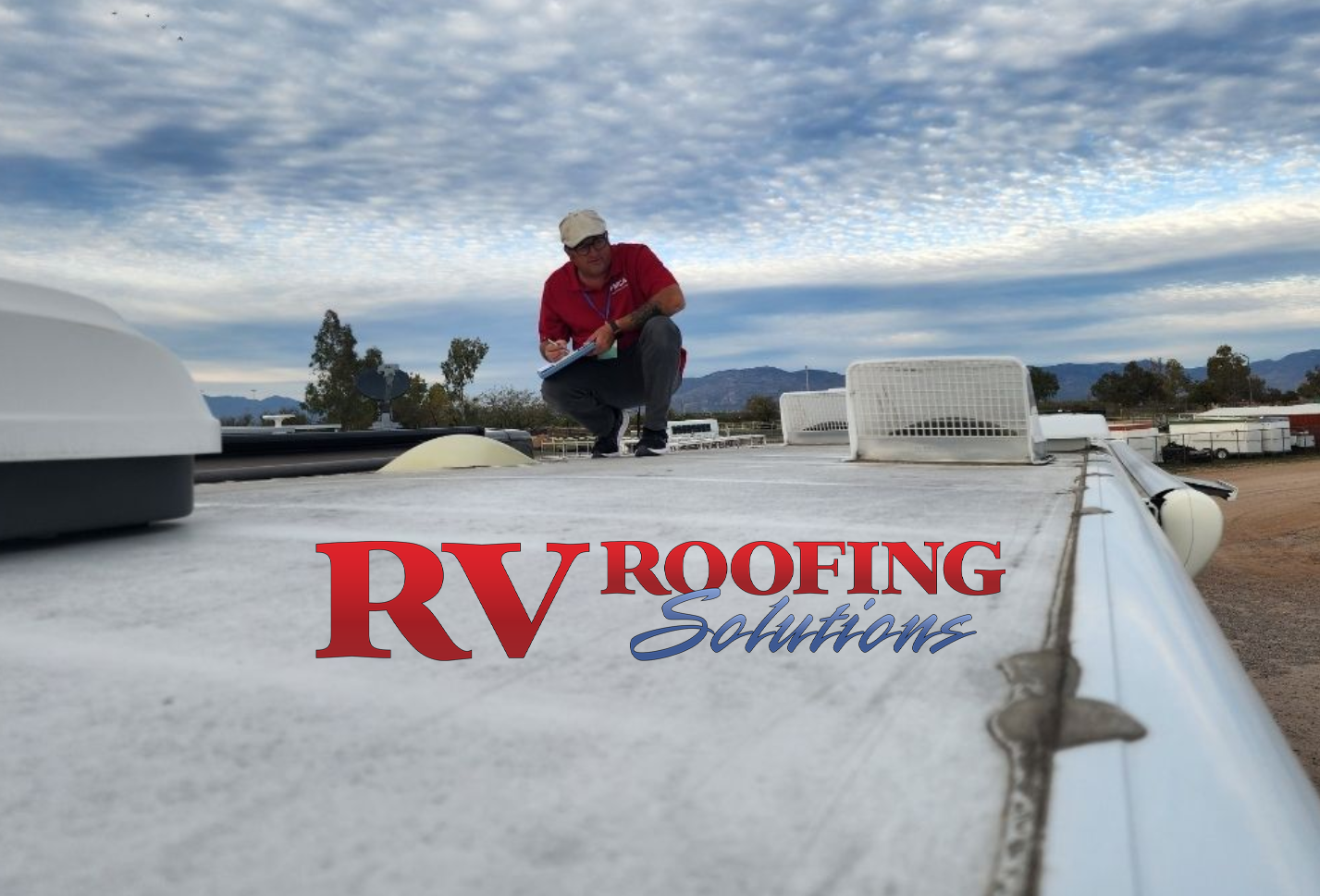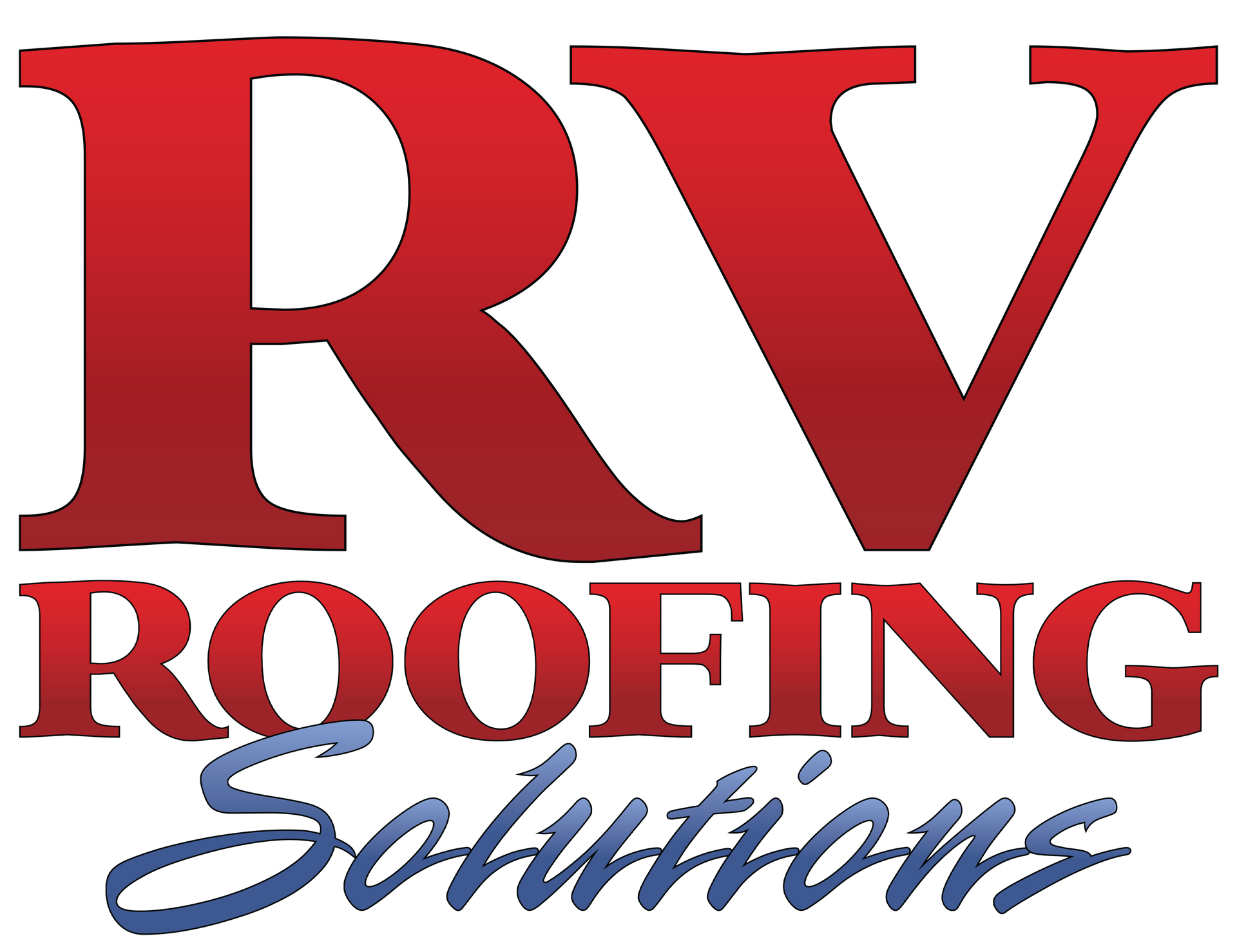Keeping your RV roof clean & happy
Jennifer Schillaci • February 29, 2024
When washing your RV, always clean the roof FIRST! Cleaning your roof makes a mess of everything else!

RV roofs are often out of sight, out of mind, so it's easy to forget about cleaning them. But if you're on this page, you've no doubt realized your RV roof needs some TLC, too. The #1 most important tip when it comes to RV roof maintenance is to keep it clean. Regularly cleaning your roof will extend its lifespan, which is good, but if your roof looks like the one in our picture it may be at the end of its lifespan. If you decide you want to take the worry out of your RV roof, replacing RV roofs is exactly what we do. We have a professionally installed maintenance-FREE RV roofing system with technicians that come to you - but you still need to wash it from time to time.
Take precautions to avoid tearing the material, which could lead to leaks and potential water damage to your rig. Knowing how to clean your RV roof properly includes being aware that the surface of your roof isn't impervious to damage. Here are a few of our tips to get the job done right.
All RV roofs can be slippery, especially when wet. When you work up there, wear soft-soled shoes and use caution. In many areas, there are mobile RV wash teams if you'd rather pay someone to do this.
If you decide to tackle this job, start by gently sweeping away any loose dirt and debris using a broom with soft or medium bristles. If you've never been up on your roof before, you should first determine whether or not you can safely climb up there. A general rule of thumb is that if your rig came with a factory ladder or built-in ladder-mounting location, it's walkable. If you don't have this, it's probably not walkable. Some RVs come with a weight capacity sticker with this information, and you can also check with your manufacturer or dealer to be sure. If you can't walk on your RV roof, we recommend using a ladder placed adjacent to your rig. To clean your roof, climb up on your ladder and remove any branches or other large objects. Then, sweep the roof with a broom to clear most of the debris. Finally, spray it down with a hose.
Use a cleaner that’s specifically designed to be safe for use on your roof’s material. Avoid abrasive cleaners or those with petroleum distillates or citrus, as they can damage the membrane. For this step, you'll need a medium-bristled brush and the right type of cleaner for your roof type. Then, it's time to soap it up, rinse it off, and let it dry. Just keep in mind that what works for one roof material may end up destroying another. Always check the roof cleaner for an indication of what RV roof material it's meant to be used on. You may need some elbow grease to remove sap, leaf stains, mold, or other stubborn stains. Make sure you have determined if its rubber, PVC, fiberglass, or aluminum. If you're not sure what type of roof you have, check out out this handy guide h ere for help identifying your roof material.
Pro tip: It's often easiest to work on smaller sections of the roof at a time.
Rinse the roof once you’ve finished cleaning. This is a good time to rinse the rig’s sides, front, and back, which will likely be a mess after cleaning the roof.
We see a lot of RVers turn to bleach to clean their RV roof (any material), particularly when it comes to scrubbing away mold spots. Most of the time, if you mix a 50/50 bleach/water solution, you won't have any trouble. However, some RVers have reported streaking when the bleach has run down the sides of the RV. In our opinion, there's no real reason to risk damaging your RV with bleach when there are so many other go-to products to turn to. If you prefer to stick with household products, we'd recommend a soapy Dawn solution over bleach.
After thoroughly cleaning the roof you can use a rubber roof UV protectant that repels dirt and protects it from damaging UV rays. A squeaky clean roof means it's time to check all the sealants ... but that's a post for another day!
You might also like
RV Roofing Solutions' Blog
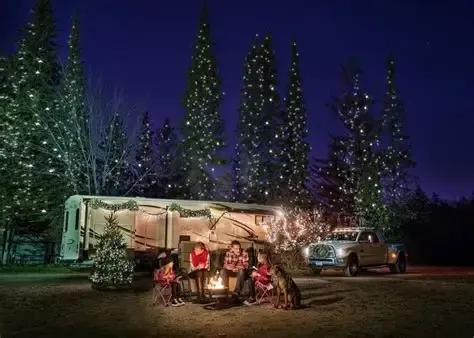
Let’s be honest—nobody wakes up Christmas morning hoping Santa left a new RV roof under the tree. It’s not shiny. It doesn’t beep. It won’t fit in a stocking. But here’s the thing: a maintenance-free roofing system from RV Roofing Solutions might just be the most underrated gift you could give (or get) this season. While others are wrapping gadgets and gizmos, you could be wrapping up years of worry-free travel. No more climbing up ladders with sealant in hand. No more surprise leaks during your holiday road trip. Just peace of mind, durability, and a roof that’s built to last—season after season. Why It’s a Holiday Hero • Zero maintenance means more time sipping cocoa and less time patching seams. • Just wash it twice a year—that’s it. No annual resealing, no stress. • Weatherproof UV protection keeps your rig cozy through winter storms and summer heat. • Long-term savings make it a gift that keeps on giving—far beyond the holidays. • Veteran-approved: Our systems are trusted by RVers who value strength, reliability, and no-nonsense solutions. So while it may not sparkle like tinsel, a new roof is a gift of freedom, security, and smart investment. And for those who’ve spent the year chasing sunsets and campfire memories, it’s a way to say: “I’ve got your back—literally.” Bonus Holiday Savings Lock in our 2025 pricing before rates increase in January and unwrap exclusive end-of-year savings! Approve your estimate and pay your deposit by December 15th to secure your spot, claim your FREE Wash Wax ALL Kit, and enjoy the peace of mind that comes with planning ahead.
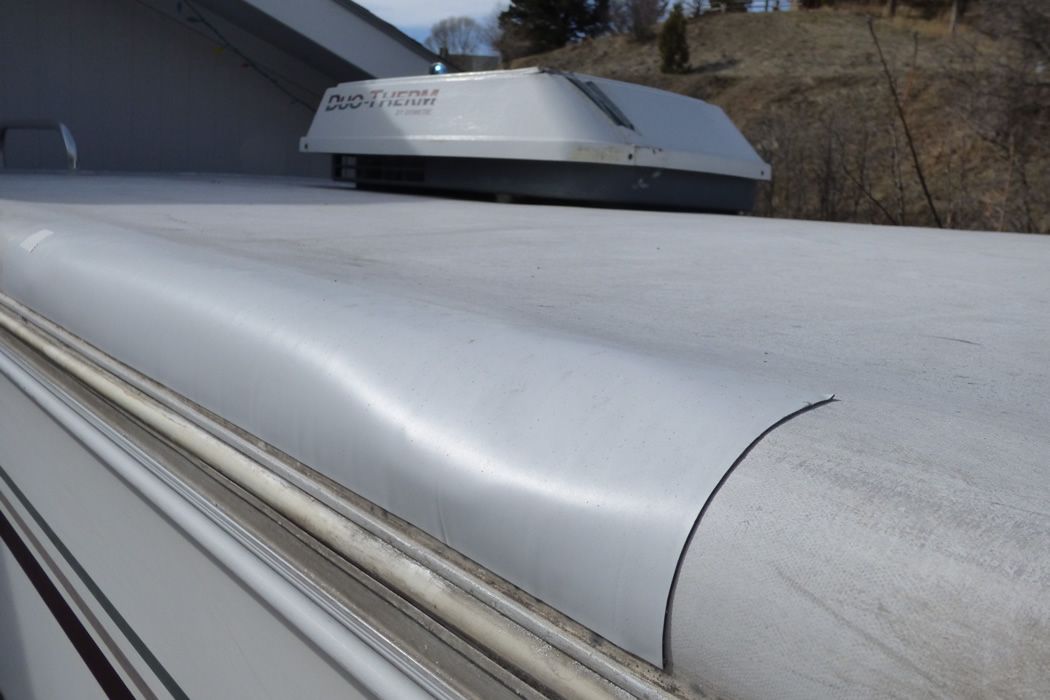
Real-World Example: A $200 Patch That Became a $9,000 Roof We recently worked with a couple who had patched a small tear in their RV roof using off-the-shelf tape they found at a local store. It held — for a while. But a few months later, they noticed bubbling in the ceiling and a musty smell creeping in. What they couldn’t see was the real problem: the patch had failed, and water had been slowly seeping into the roof’s substructure. By the time we got on the roof to do the install, the damage had significantly spread — compromising the roof decking, soaking the insulation, and even affecting interior panels. What started as what they thought would be a simple fix turned into a full roof replacement that cost over $9,000. And the worst part? Much of that damage could have been avoided with early intervention. Layer Cake Caulk? Not the Solution. We see it all the time — RV roofs covered in layers of caulk, tape, and sealant. It might feel like you’re reinforcing protection, but the truth is: layered patching is one of the worst things you can do. Why? • It traps dirt and debris between layers, creating pockets where water can sneak in. • It deteriorates unevenly, making it nearly impossible to pinpoint the source of a leak. • It hides damage, giving a false sense of security while moisture spreads underneath. We call it “layer cake caulk,” and trust us — it’s not sweet. At rallies this year alone, RV Roofing Solutions provided over 600 FREE roof inspections. And we found issues in rigs of every age and style — sometimes even a stray tree branch was the culprit. But more often, it was a patch job gone wrong. If your roof looks like a patchwork of tape and caulk, it’s time to stop layering and start protecting.


